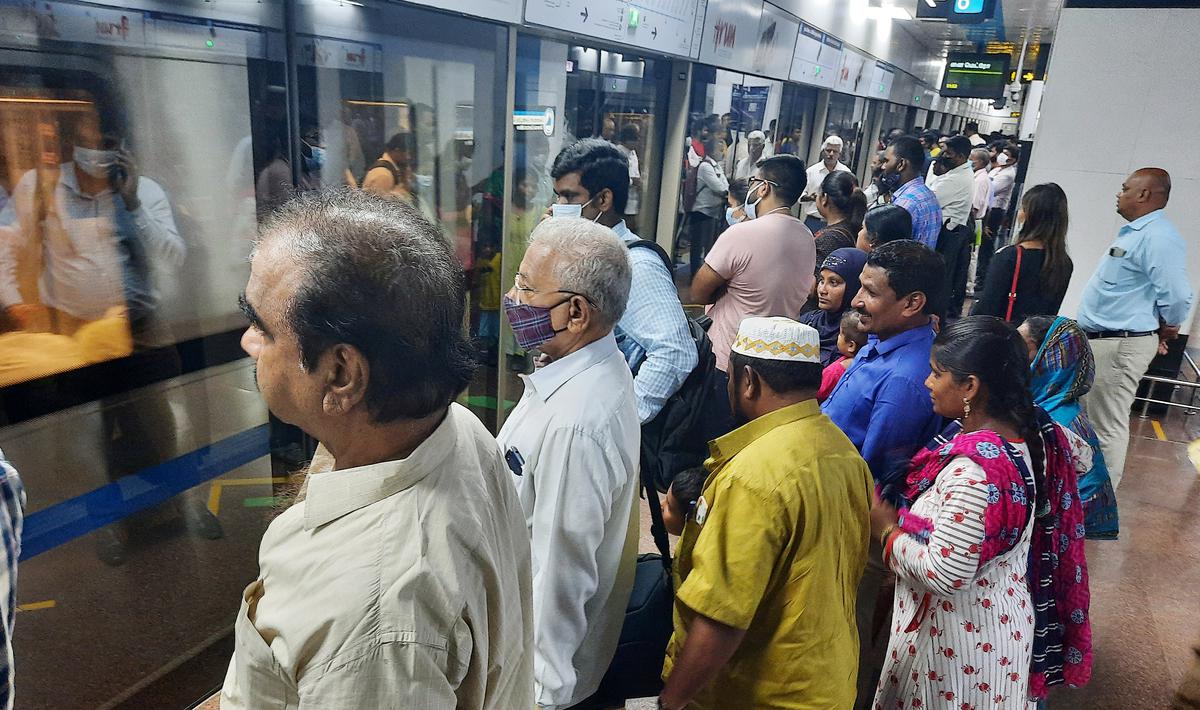
Chennai Metro Rail’s average daily ridership touches 2.20 lakh during the past week
The Hindu
The number of commuters peaked at 2.60 lakh on October 21 as hundreds left the city for the Deepavali long weekend; Chennai Central Metro stood as the most-used station, with a footfall of 18,000-20,000
Chennai Metro Rail’s average daily ridership over the past week has touched 2.20 lakh. As hundreds were leaving the city on October 21 for the Deepavali long weekend, the system’s ridership peaked at 2.60 lakh.
The most-used station was the Chennai Central Metro, with 18,000-20,000 passengers. Following this, two stations — Guindy and Thirumangalam — each recorded a footfall of 12,000-14,000.
According to Chennai Metro Rail Limited (CMRL) officials, they have been seeing a progressive increase in passenger traffic over the past few months after CMRL and the Metropolitan Transport Corporation (MTC) began running minibuses to shuttle commuters to and from the stations and nearby areas. Shenoy Nagar, Tiruvottiyur, Koyambedu, Government Estate, Alandur, Little Mount, Guindy and Chennai airport are the stations where passengers have access to minibuses.
“This apart, we have also been operating a few share autorickshaws from some residential colonies in select areas, like Koyambedu, and plan to expand the service further. We have started identifying pockets where there is demand. We are also planning to take measures to run link services between schools, colleges and IT companies and stations,” an official said.
The detailed project report (DPR) had stated that there would be nearly 7.5 lakh passengers a day travelling in Metro Rail, but the existing ridership figures are still fall short of the projected passenger traffic.
K.P. Subramaniam, an urban planning expert, said, “Despite the discount that the Metro offers, it is still not affordable for many commuters. The problem is the system’s ridership alone cannot grow independently. Other factors like MTC bus connectivity at all stations, neat, accessible and continuous footpaths and dedicated last-mile connectivity feeder services that operate in sync with the train timings also play a role. Such initiatives will greatly pull commuters to use the public transport itself.”













